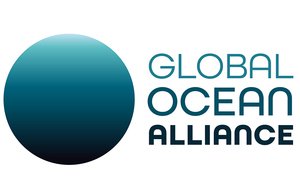The Global Oceans Treaty: UN's IGC4 Meeting in March 2022
Oceans provide important critical natural resources for both human and planetary health. Find out what role we can play in protecting, restoring, and managing marine biodiversity.
Written by Victoria Kent, Senior Investment Specialist
Photo by Efe Kurnaz on Unsplash
This information does not take into account your personal objectives, financial situation or needs. You should consider if the relevant investment is appropriate having regard to your own objectives, financial situation and needs.
This summer, I hope you experienced the joy of plunging your body into the sea on a hot day.
That salty shock is surely one of the best feelings in the world – savour this memory while we ponder the importance of our oceans.
Oceans cover 70% of the earth’s surface. Without a healthy ocean, there would be no life as we know it.
The world’s oceans provide more than half the oxygen we breathe, helps transport 90% of traded goods, and houses 15% of the planet’s species. Oceans regulate the climate and feed billions of people across the world.
But oceans are largely ungoverned. This has led to abuses of all sorts including overfishing, pollution, forced labour and even human trafficking. As ocean conservationists Sea Shepherd put it:
"Poachers plunder marine life sanctuaries with impunity, and illegal, unreported and unregulated (IUU) fishing goes unchecked in the high seas far from public scrutiny."
Good ocean governance is therefore critical to the sustainability of our planet.
The UN will soon meet (March 2022) for the fourth session to discuss the creating a legally binding instrument under the UN Convention on the Law of the Sea.
The purpose of this instrument is the conservation and sustainable use of marine biological diversity of areas beyond national jurisdiction.
It is officially known as the Intergovernmental Conference on Marine Biodiversity of Areas Beyond National Jurisdiction. You can view the draft text of the treaty here.
Let’s decipher the UN language to understand what is actually being done here.
The UN Convention on the Law of the Sea (UNCLOS) is a key international agreement. The agreement grants coastal and island states authority over swaths of ocean extending 200 nautical miles (360 kilometres) from the shore. These are called exclusive economic zones (EEZ).
However, a vast portion of the ocean lies beyond EEZs. These areas are what Captain Feathersword would call The High Seas, or as the UN refers to it, "areas beyond national jurisdiction".
Non-EEZ areas are home to vast ecosystems, not to mention international trade routes, fishing fleets, commercial mining interests and telecommunications cables (like this one that got damaged in the recent volcanic eruption near Tonga).
Check out a map of submarine cables here.
There is currently no binding mechanism under international law for conservation in the high seas.
This, combined with a lack of fishing data transparency (and secrecy), means a lot of unknown activity.
Scientists warn marine species, or even entire ocean ecosystems, could be lost before we have had a chance to identify and understand them.
In 2021, Australia joined 70 other countries in the UK-led Global Ocean Alliance: 30by30 Initiative.
It aims to protect at least 30% of the global ocean in Marine Protected Areas (MPAs) and Other Effective area-based Conservation Measures (OECMs) by 2030. These areas will safeguard biodiversity and sustain ecosystems.
Which brings us to the upcoming Intergovernmental Conference on Marine Biodiversity of Areas Beyond National Jurisdiction at the United Nations IGC4.
It is only through a strong Global Ocean Treaty that we can achieve this protection. So embrace your inner-Jack Sparrow and help protect the high seas!
Visit Greenpeace’s campaign page to sign the petition calling on world governments to get involved.


